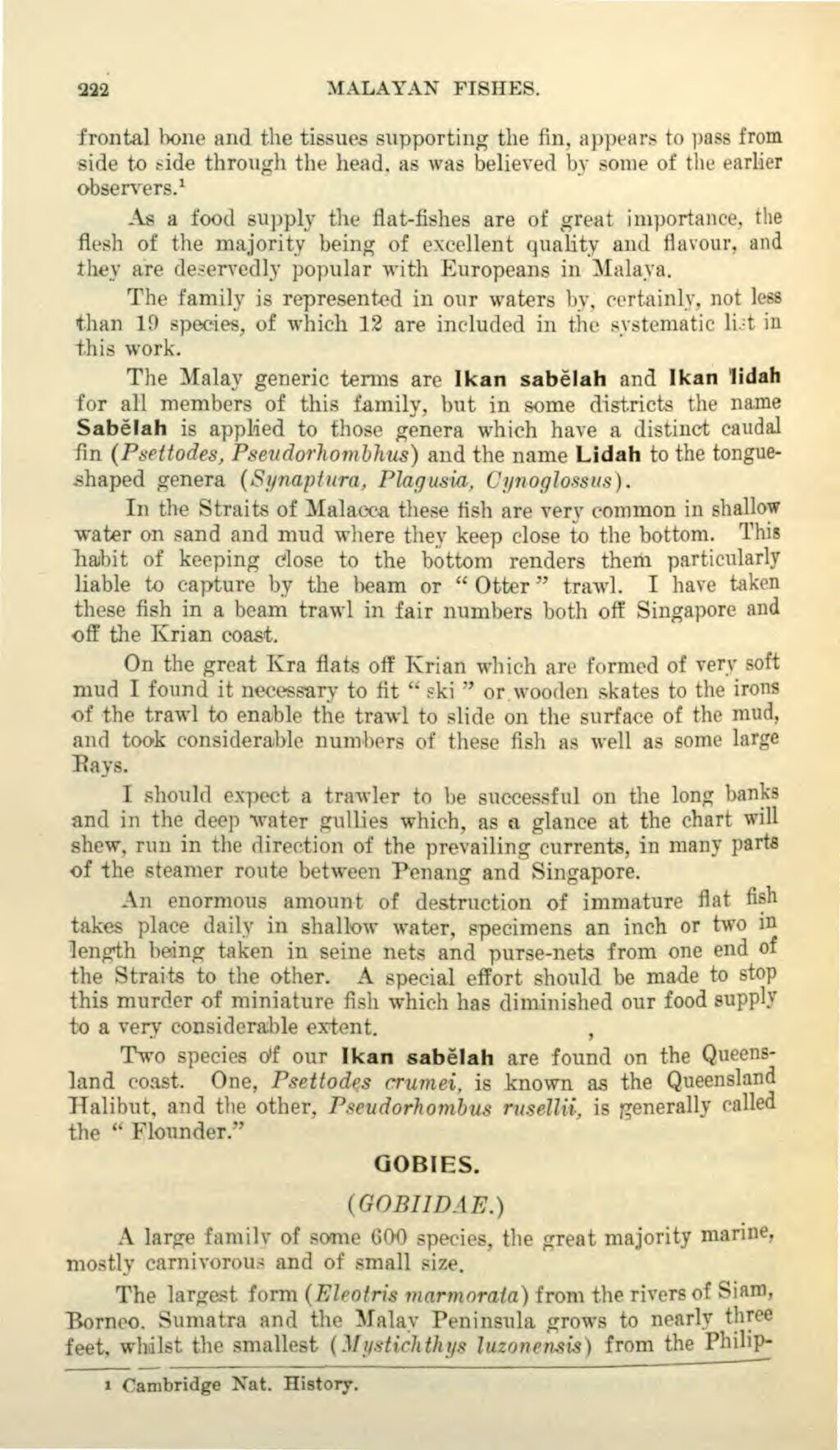frontal bone and the tissues supporting the fin, appears to pass from side to side through the head, as was believed by some of the earlier observers.[1]
As a food supply the flat-fishes are of great importance, the flesh of the majority being of excellent quality and flavour, and they are deservedly popular with Europeans in Malaya.
The family is represented in our waters by, certainly, not less than 19 species, of which 12 are included in the systematic list in this work.
The Malay generic terms are Ikan sabělah and Ikan lidah for all members of this family, but in some districts the name Sabělah is applied to those genera which have a distinct caudal fin (Psettodes, Pseudorhombhus) and the name Lidah to the tongue-shaped genera (Synaptura, Plagusia, Cynoglossus).
In the Straits of Malacca these fish are very common in shallow water on sand and mud where they keep close to the bottom. This habit of keeping close to the bottom renders them particularly liable to capture by the beam or "Otter" trawl. I have taken these fish in a beam trawl in fair numbers both off Singapore and off the Krian coast.
On the great Kra flats off Krian which are formed of very soft mud I found it necessary to fit "ski" or wooden skates to the irons of the trawl to enable the trawl to slide on the surface of the mud, and took considerable numbers of these fish as well as some large Rays.
I should expect a trawler to be successful on the long banks and in the deep water gullies which, as a glance at the chart will shew, run in the direction of the prevailing currents, in many parts of the steamer route between Penang and Singapore.
An enormous amount of destruction of immature flat fish takes place daily in shallow water, specimens an inch or two in length being taken in seine nets and purse-nets from one end of the Straits to the other. A special effort should be made to stop this murder of miniature fish which has diminished our food supply to a very considerable extent.
Two species of our Ikan sabělah are found on the Queensland coast. One, Psettodes crumei, is known as the Queensland Halibut, and the other, Pseudorhombus rusellii, is generally called the "Flounder."
GOBIES.
(GOBIIDAE.)
A large family of some 600 species, the great majority marine, mostly carnivorous and of small size.
The largest form (Eleotris marmorata) from the rivers of Siam, Borneo. Sumatra and the Malay Peninsula grows to nearly three feet, whilst the smallest (Mystichthys luzonensis) from the Philip-
- ↑ Cambridge Nat. History.
